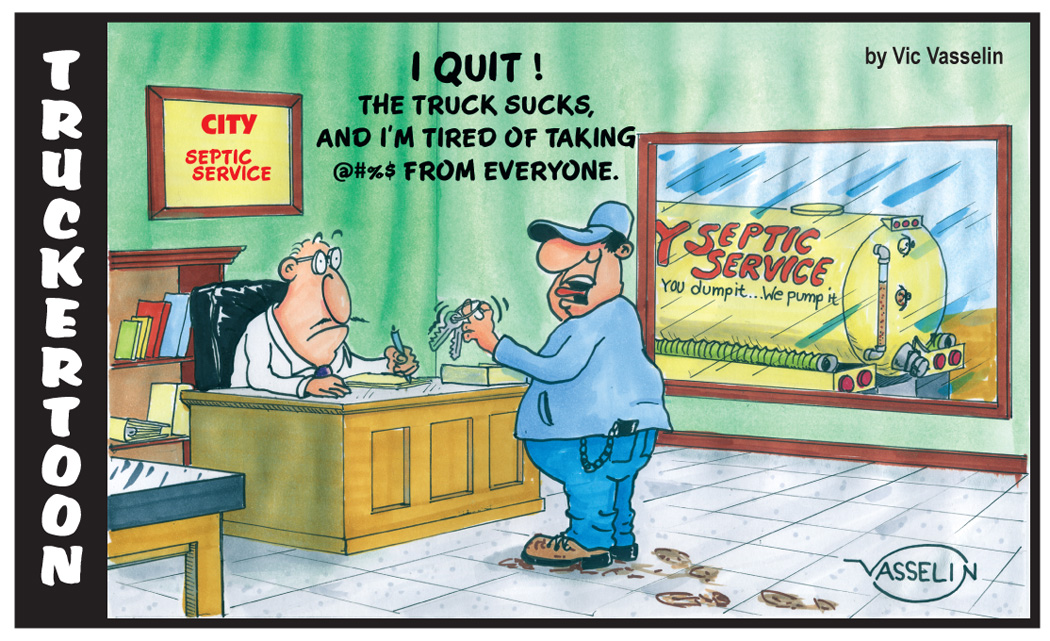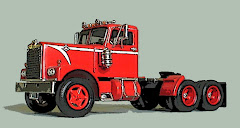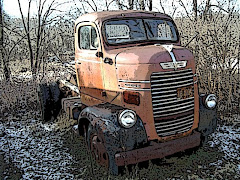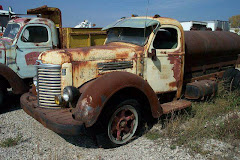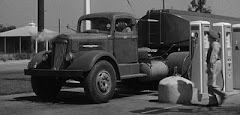A little about HUG from Coachbuilt,com --
| "C.J. Hug was a road builder who found that none of the trucks on the market satisfied his requirements as they were too low geared and lacked suitable bodies, so in 1921 he built a prototype of his own design, and went into production with it early in 1922. Powered by a 34 hp 4cylinder Buda MU engine, the Model T had a Warner 3speed gearbox and Clark spiral bevel rear axle, giving a top speed of 45 mph, a high figure for even a 1-tonner in 1922, let alone a 2-tonner which the Hug was. It had pneumatic tires and open cab and the choice of a rectangular body for dry loads or an inverted trapezoidal body for wet mixed concrete. For 1925 the T was joined by the 3 ½ -ton Model CH, followed in 1927 by the 4-6-ton Model 88 powered by a 43 hp Buda KUBI engine with Brown-Lipe 7-speed transmission and Wisconsin rear axle. By the early 1930s Hug Roadbuilder trucks were getting larger and larger; the 1937 range included 6 ½, 18 and 20-ton Roadbuilders with 6-cylinder Buda gasoline or 4-cylinder Caterpillar diesel engines. These were 4x2 or 6x4 trucks with shaft drive, but for quarry work there were 6x2 and 6x4 chain-driven models, the chain-drive units being made by the Six Wheel Co. of Los Angeles who made even larger trucks themselves under the name Maxi. A long overhanging shelf, serving as a roof, was built into the front of the dump body as a shelter for the driver. Chassis prices for the quarry trucks ran as high as $18,320 for the 120,000 lb GVW Model C99MA, the largest Hug ever made. A special option for the 6-wheelers was a J. Walter Christie detachable half-track to loop the tandems for work on soft ground. For 1939 a general change from Buda to Waukesha gasoline engines was made, though diesels were still Caterpillar. Hugs were widely used in roadmaking, housing estate construction and dam building; one of the most important customers was the Tennessee Valley Authority who bought 29 of the large 6-wheelers which were made from 1929 to 1940. Although Roadbuilders and quarry trucks formed the major part of Hug's production, and earned the company fame as they were the first purpose-built trucks of this kind, there were also a number of highway trucks called "Xpress" in 2, 3, and 3 ½ -ton sizes, powered by 6-cylinder Buda engines. Some of the tractors had sleeper cabs when these were far from usual, and there were some cab-over tractors powered by Buda gasoline or Cummins diesel engines. The 1938 Model1610-ton cab-over tractor used a 468cu in Caterpillar diesel engine. In about 1938 the Hug Company began building rear-engined bus chassis, and also undertook the conversion of standard truck chassis. For a brief period Hug offered completely assembled buses, with a body design of sectional construction which was the basis for the later "Mate" series of bodies built by the Wayne works - not surprising since C.J. Hug's office was in the Wayne factory at Richmond, Indiana. After war broke out in Europe Hug built eight of the Model 50-6 cargo trucks, 6x6 7Y2-tonners powered by Hercules engines and generally resembling the Marmon-Herringtons of the period. These went overseas under Lend-Lease. After 1939 the number of giant truck models was reduced, and Hug built a series of highway trucks looking identical to the 1941 round-nosed Reos since they bought sheet metal from Reo. Most of these were sold to the Pet Milk Co which, over many years, had bought a total of 177 trucks from Hug. The last Hug truck left the factory on June 10th 1942, ending a 20-year production run of 4,014 units, including about 50 trailers. Hugs were widely distributed, being sold in 41 states and 7 foreign countries including Mexico and South America." In case you missed the link -- HUG TRUCKS -- and of course we need a HUG -- 1937 model 20 --- |






